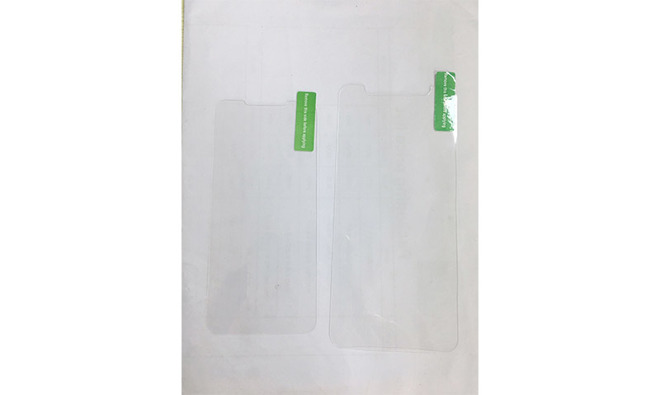A questionable "leak" on Thursday claims to show a screen protector designed to fit an as-yet-unannounced next-generation iPhone SE model that, like past "leaks," includes a notch cutout some believe will accommodate Apple's TrueDepth camera array.

Shared on Twitter by parts leaker Sonny Dickson, the screen protector is displayed side-by-side with a corresponding part made for iPhone X. At first glance, the pair appear to be nearly identical in shape, complete with TrueDepth cutout and rounded corners, though there are subtle differences worth noting.
Most apparent is the size of the supposed "iPhone SE 2" notch, which compared to the iPhone X version is substantially shallow. If the part is based on authentic schematics, it suggests Apple's small form factor handset will incorporate a slightly tweaked design that either greatly reduces TrueDepth's footprint or, more likely, shifts the loudspeaker, front-facing camera and ambient light sensor toward the top of the device.
In such a scenario, "iPhone SE 2" would indeed receive a much rumored design overhaul, but might do without Apple's cutting-edge Face ID biometric authentication technology. That is unless Apple intends to incorporate a second-generation TrueDepth sensor that is roughly half the size of the array in iPhone X.
Case maker Olixar hinted at a similar design in renders released this month, noting the notch on iPhone SE will come in at about half the height of that found on Apple's flagship smartphone.
Curiously, the screen protector shown off today lacks a cutout for Touch ID, suggesting the notch is indeed meant to accommodate TrueDepth's sensor stack. That Apple would do away with all biometric hardware simply to enlarge the SE's screen is highly unlikely. Equally unlikely, however, is the incorporation of expensive, top-tier Face ID technology in what is marketed as Apple's budget iPhone.
The initial model debuted in 2016 as an amalgamation of Apple's iPhone products. Borrowing a chassis design from the iPhone 5s, iPhone SE includes an A9 processor and camera equipment taken from the iPhone 6s series, but lacks certain key features like 3D Touch to keep costs down.


